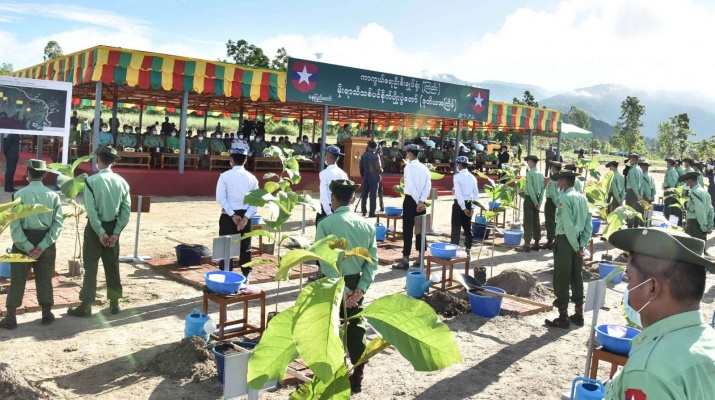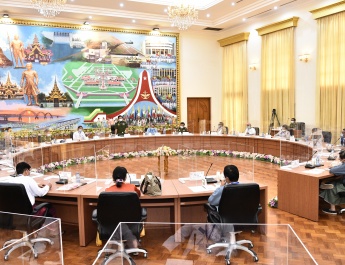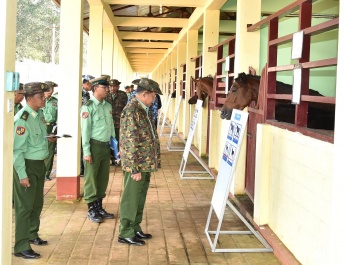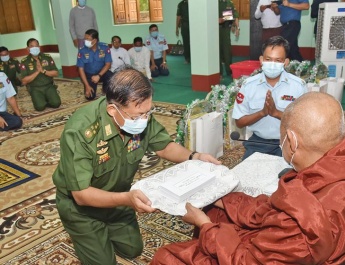NAY PYI TAW July 25
Families of Office of Commander-in-Chief (Army, Navy and Air) held the second monsoon tree-planting ceremony for 2022 near Yezin Dam, Zeyathiri Township, Nay Pyi Taw. Chairman of State Administration Council Commander-in-Chief of Defence Services Senior General Min Aung Hlaing planted a Yadana teak sampling at the ceremony this morning.
Also present were Daw Kyu Kyu Hla, wife of the Senior General, SAC Vice Chairman Deputy Commander-in-Chief of Defence Services Commander-in-Chief (Army)Vice-Senior General Soe Win and wife Daw Than Than Nwe, Union ministers and their wives, the Chief of General Staff (Army, Navy and Air) and wife, the Commander-in-Chief (Navy), the Commander-in-Chief (Air) and wife,senior military officers of the Office of theCommander-in-Chief and their wives, the Nay Pyi Taw Command commander and wife, senior officer trainees of National Defence College, officers, other ranks and families of the relevant offices and departments of the Office of the Commander-in-Chief (Army).
Forests and trees are an ecological chain of all life including human
Speaking at the ceremony, the Senior General said Tatmadaw has been holding annual tree planting ceremonies for more than a decade. Annual tree-planting ceremonies are also participated by the ministries, regions and states and organizations. Forests and trees are an ecological chain of all life including humans.
So they are important for the existence of all life. They absorbed all the emissions including toxic gas and carbon dioxide and produce oxygen for humans and animals.
Tatmadaw must systematically manage the nurseries for the success of seed germination, grow and nurse the saplings till they flourish and replace the trees that do not survive with the healthy ones, without doing the tree-planting job at a superficial level. It must take into account the area of the designated land, weeding task, and moisture level and soil condition.
Maintain favourable results of tree-planting activities
Tatmadaw conducted 32 treeplanting ceremonies during the period from 2011 to 2021 and planted a total of 168,087 trees.
Tatmadaw grew 4,304 saplings in the first ceremony of 2022.
Success rate reached over 80 percent every year, except from five years when the rate fell below 60 percent. So, the success must be maintained.
At the annual ceremonies, Tatmadaw systematically planted valuable local tree strains, seasonal flowering trees, fastgrowing trees, evergreen trees and shade trees in accord with the climate and soil conditions of the respective places.
To stand as a society conserving natural environment
Hence, if all citizens in individuals and groups, organizations, villages and townships including Tatmadaw member grow and nurture the saplings, the whole country will be a society which protect and conserve the natural environment.
If so, those citizens will possess a pleasant environment. As they will have the chance to enjoy favourable weather and clean breezing, they will be healthy and fit with full of life expectancy in the society.
Forests and trees indirectly and directly benefit the natural environment in various ways and means. Mangrove forests in coastal areas are important for removing carbon dioxide from the atmosphere, lessening the intensity of strong storms as well as contributing to changing of their directions.
These were vividly seen in incidents of natural disasters Myanmar had faced.
In inland areas, forests and trees retain the soil layer for achieving success in farmlands and sustain the underground water for existence of wells and natural water such as creeks, lessening landslide in erosion by rivers and heavy rains. As growing trees aims to make efforts for the majority with goodwill, not for selfish, it is a good deed in the religious perspective.
Systematic growing to have actual thriving for already planted saplings
Since the time when all saplings have been planted, it is necessary to establish a system to continuously monitor the saplings. Maintenance and nurturing of saplings must be undertaken without fail in all seasons depending on term of the plants. Everybody should not cultivate the saplings with ordinary efforts, and they have to systematically grow the saplings to be actually thrived. They all need to nurture the alreadygrown plants and submit the unsuccessful plants with new ones. As the public welfare task is one of the three main tasks of the Tatmadaw members to conserve the public natural environment, they all need to actively participate in the tree-growing ceremonies on a yearly basis.
SAC Chairman Commander-in-Chief of Defence Services and wife lead growing of teak sapling
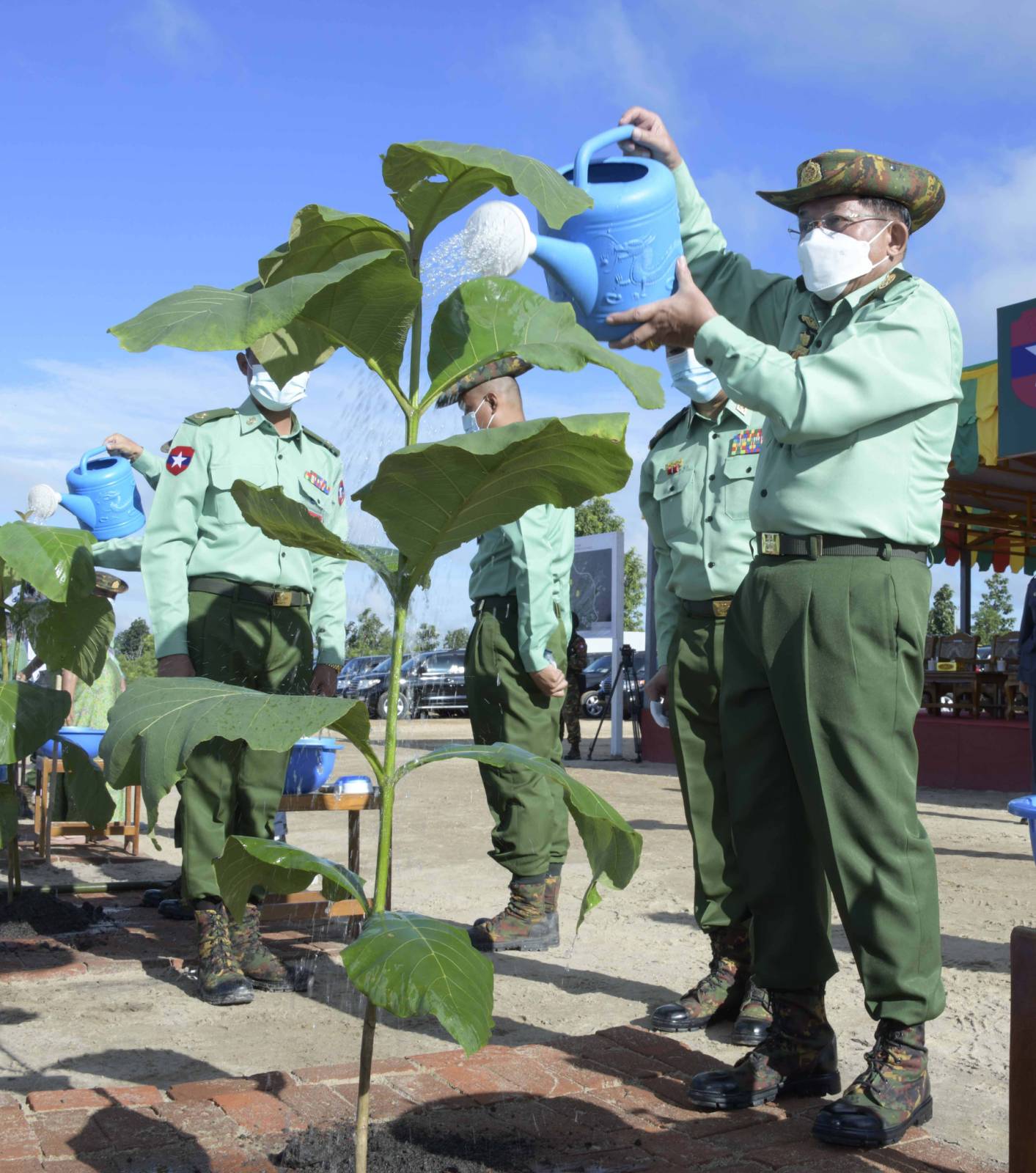
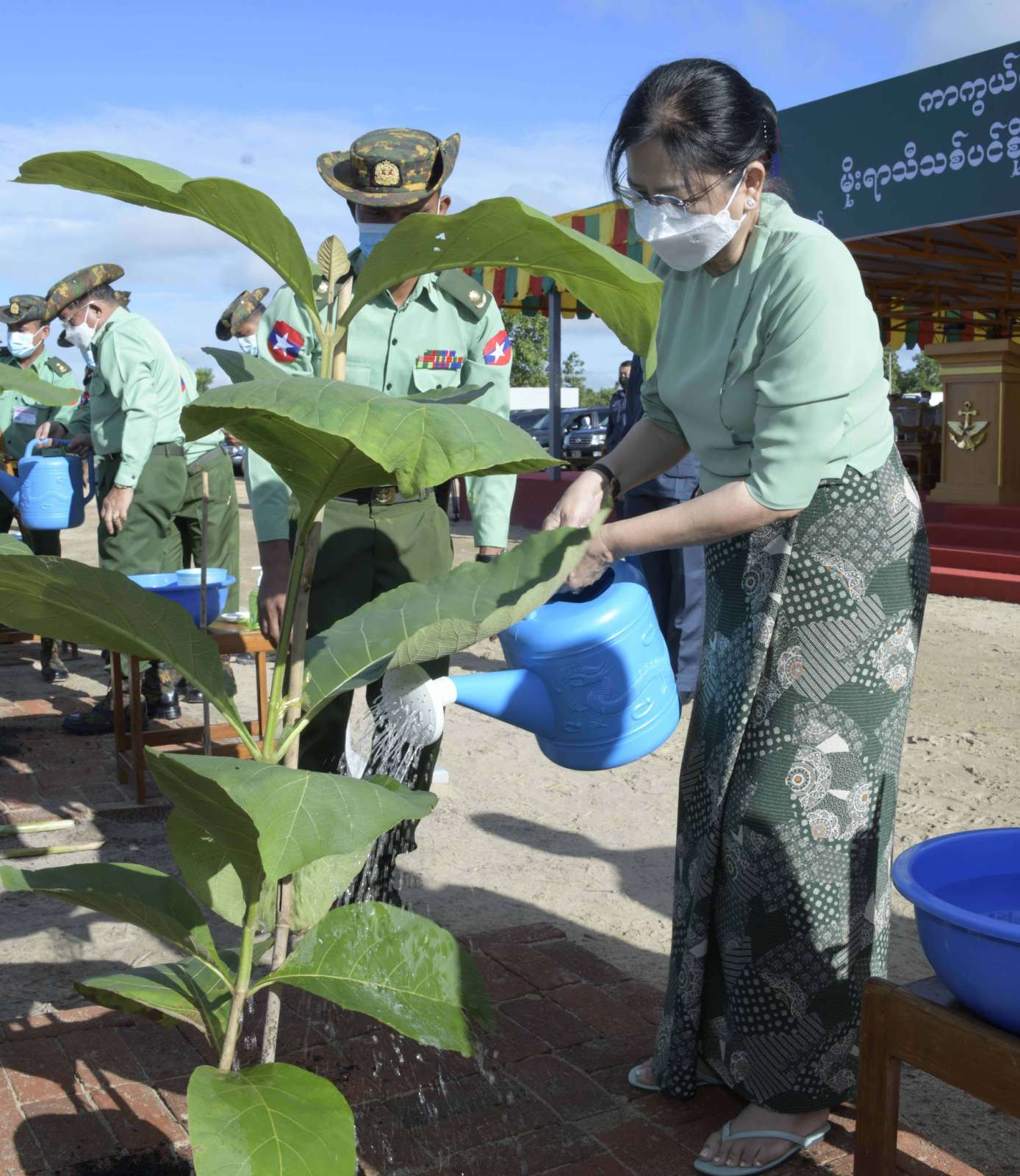
Next, the Senior General and wife led the ceremony by growing a teak sapling. Next, the Vice-Senior General and wife, Union ministers and wives, the Chief of the General Staff (Army, Navy and Air) and wife, the Commander-in-Chief (Navy), the Commander-in-Chief (Air) and wife, senior military officers from the Office of the Commander-in-Chief and wives, officers, other ranks and families planted saplings at designated sites. The Senior General and wife and party viewed round collective cultivation of saplings by officers, other ranks and families.
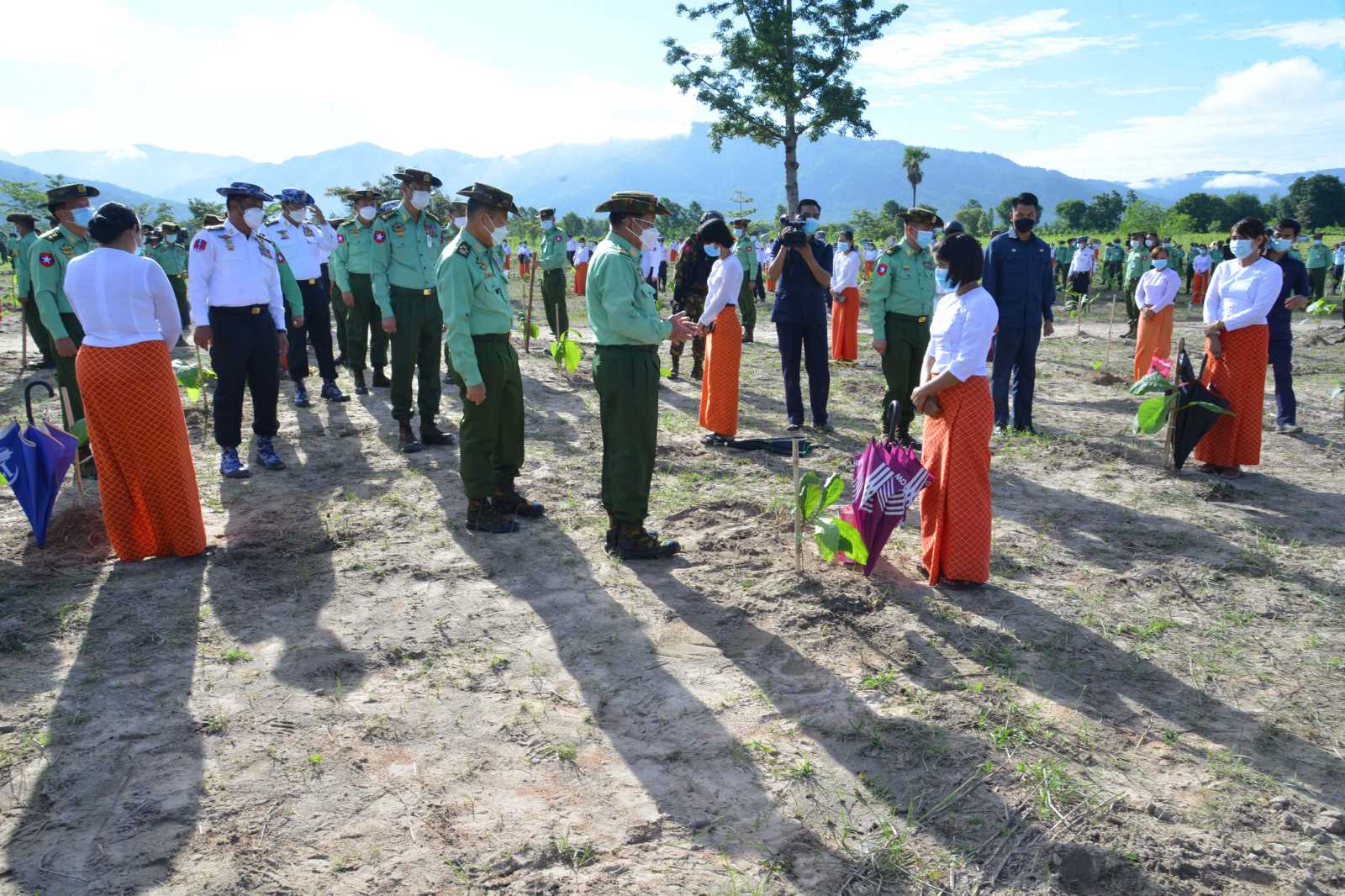
A total of 177,053 precious, perennial and shade trees grown at around Yezin Dam in the second tree-growing ceremonies from 2011 to 2022
A total of 4,304 saplings—2,153 teak saplings, 1,076 ironwood saplings and 1,076 Manjansha plants—were grown by families of the Office of the Commander-in-Chief (Army, Navy and Air) at today’s second tree-growing ceremony.
Families of the Office of the Commander-in-Chief (Army, Navy and Air) grew 177,053 precious, perennial and shade saplings from 2021 to the second tree-growing ceremony in 2022.
The whole Tatmadaw collectively grew 195,038 saplings today
All military commands held the monsoon tree-growing ceremonies. In this regard, Nay Pyi Taw Command grew 11,100 industrial raw, precious, perennial and shade plants today, Northern Command 14,676 saplings, North-East Command 11,970 saplings, Eastern Command 5,900 saplings, Eastern Central Command 14,300 saplings, Triangle Region Command 17,785 saplings, South-East Command 8,933 saplings, Coastal Region Command 10,743 saplings, Yangon Command 21,022 saplings, South-West Command 9,395 saplings, Western Command 16,518 saplings, North-West Command 9,915 saplings, Central Command 26,457 saplings and Southern Command 12,020 saplings including 4,304 saplings at the compound of the Commander-in-Chief (Army).
Commanders and officials supervised the ceremonies.


